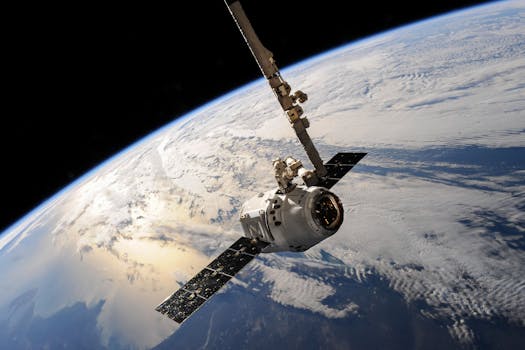
The Future of Satellites: Revolutionizing Global Connectivity
The future of satellites is poised to revolutionize global connectivity, enabling faster and more reliable communication, navigation, and remote sensing. With the increasing demand for satellite-based services, the industry is witnessing a significant transformation, driven by advances in space technology, declining launch costs, and the emergence of new players.
Focus Keyword: The future of satellites is expected to play a vital role in shaping the global connectivity landscape, with satellites becoming an integral part of modern life. From enabling high-speed internet access in remote areas to providing critical navigation and weather forecasting services, the applications of satellites are vast and diverse.
Advances in Space Technology
One of the primary drivers of the satellite industry’s growth is the rapid advancement in space technology. Significant improvements in materials, propulsion systems, and electronics have enabled the development of more efficient, compact, and cost-effective satellites. For instance, the use of 3D printing and advanced manufacturing techniques has reduced production time and costs, making it possible to launch constellations of small satellites into orbit.
Furthermore, the development of reusable launch vehicles, such as those produced by SpaceX and Blue Origin, has significantly reduced the cost of accessing space. This has opened up new opportunities for satellite operators, enabling them to launch more satellites into orbit and providing greater flexibility in terms of launch schedules and costs.
Emerging Trends and Applications
The future of satellites is also being shaped by emerging trends and applications, such as the Internet of Things (IoT), big data analytics, and artificial intelligence (AI). Satellites are playing a critical role in enabling IoT connectivity, particularly in remote and underserved areas, where terrestrial networks are often non-existent or unreliable.
In addition, satellites are being used to collect and analyze vast amounts of data, providing valuable insights into weather patterns, climate change, and natural resources management. The use of AI and machine learning algorithms is also being explored to improve satellite operations, such as predictive maintenance, anomaly detection, and autonomous decision-making.
Challenges and Opportunities
Despite the many opportunities presented by the future of satellites, there are also significant challenges that need to be addressed. One of the primary concerns is the growing problem of space debris, which poses a significant risk to operational satellites and the environment.
Moreover, the increasing reliance on satellites for critical services, such as navigation and communication, raises concerns about cybersecurity and the potential for disruption or interference. To mitigate these risks, satellite operators and regulators must work together to develop and implement robust security protocols and standards.
Conclusion
In conclusion, the future of satellites is poised to revolutionize global connectivity, enabling faster and more reliable communication, navigation, and remote sensing. With advances in space technology, declining launch costs, and the emergence of new players, the industry is witnessing a significant transformation.
As the demand for satellite-based services continues to grow, it is essential to address the challenges and opportunities presented by this trend. By working together to develop and implement innovative solutions, we can unlock the full potential of satellites and create a more connected, sustainable, and prosperous future for all.



